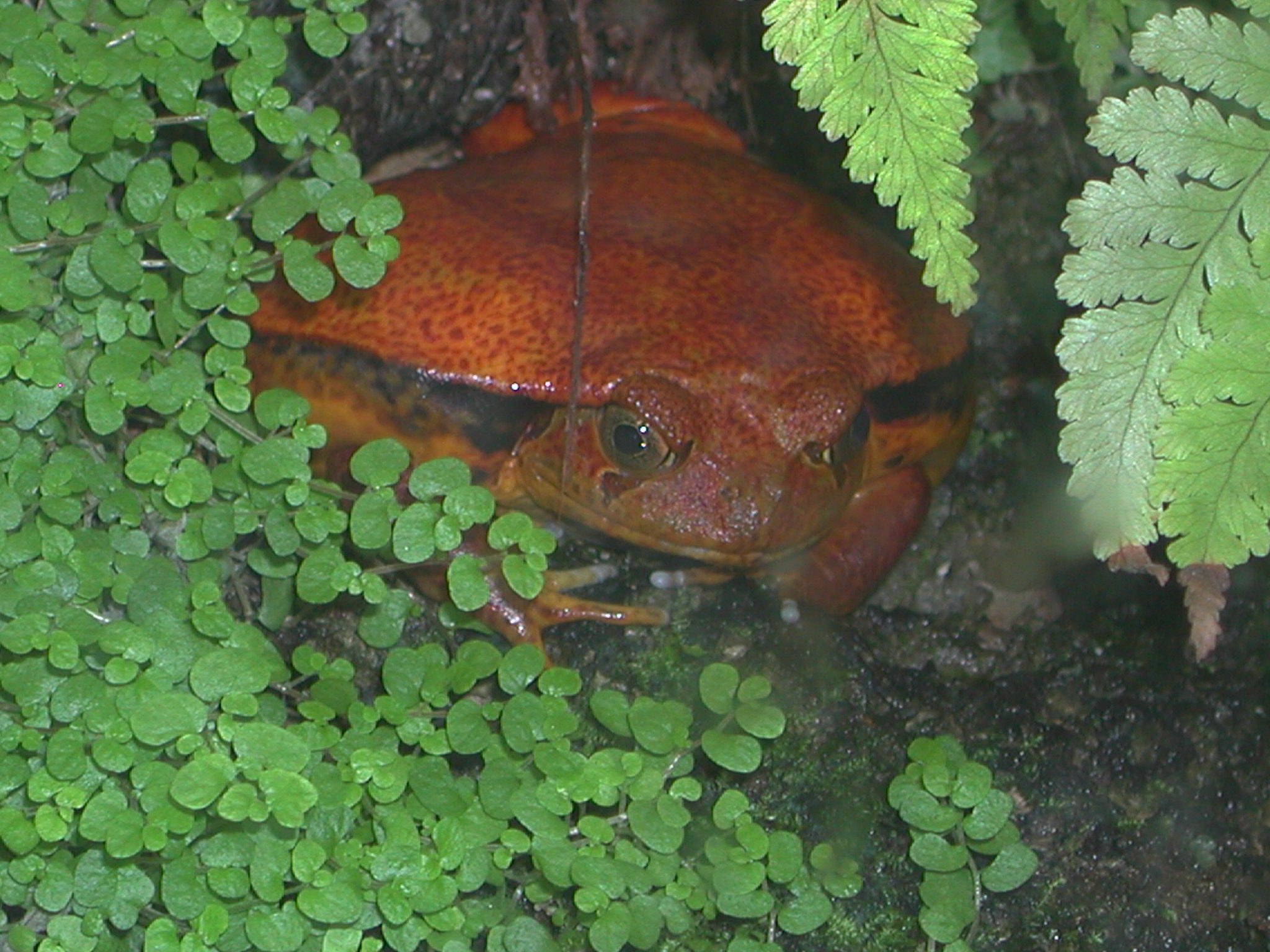|
Dyscophinae
Tomato frogs are any of the three species of genus ''Dyscophus'' (family Microhylidae): ''D. antongilii'', ''D. insularis'', or ''D. guineti''. ''Dyscophus'' is the only genus in subfamily Dyscophinae. They are endemic to Madagascar. The common name comes from ''D. antongiliis bright red color. When threatened, a tomato frog puffs up its body. When a predator grabs a tomato frog in its mouth, the frog's skin secretes a thick substance that numbs up the predator's eyes and mouth, causing the predator to release the frog to free up its eyes. The gummy substance contains a toxin that occasionally causes allergic reactions in humans. The allergic reaction will not kill a human and the frog secretes it only when frightened. The lifespan of the tomato frog can be from 6 to 8 years. When adult, the colors may vary from yellowish orange to deep red. Tomato frogs will reach sexual maturity in 9–14 months. Females are larger than males and can reach 4 inches in length. Males can reach 2 ... [...More Info...] [...Related Items...] OR: [Wikipedia] [Google] [Baidu] |
Microhylidae
The Microhylidae, commonly known as narrow-mouthed frogs, are a geographically widespread family of frogs. The 683 species are in 63 genera and 11 subfamilies, which is the largest number of genera of any frog family. Evolution A molecular phylogenetic study by van der Meijden, et al. (2007) has estimated the initial internal divergence of the family Microhylidae to have taken place about 66 million years ago, or immediately after the Cretaceous extinction event. The most recent common ancestor of the Microhylidae and their closest ranoid relatives is estimated to have lived 116 million years ago in Gondwana. Description As suggested by their name, microhylids are mostly small frogs. Many species are below in length, although some species are as large as . They can be arboreal or terrestrial, and some even live close to water. The ground-dwellers are often found under leaf litter within forests, occasionally venturing out at night to hunt. The two main shapes for the microhyli ... [...More Info...] [...Related Items...] OR: [Wikipedia] [Google] [Baidu] |
Dyscophus Antongilii
''Dyscophus antongilii'', the Madagascar tomato frog, is a species of frog in the family Microhylidae. Description Females are much larger than males, reaching up to 10.5 cm and 230 g in weight (6.5 cm and 41 g for males). Tomato frogs live up to their name by possessing a vibrant, orange-red colour. Females have brighter tones of red or orange on their back, with a pale undersurface. Some individuals also have black spots on the throat. It is thought that the brilliant colours of the tomato frog act as a warning to potential predators that these frogs are toxic; a white substance secreted from the skin acts as a glue to deter predators (such as colubrid snakes) and can produce an allergic reaction in humans. Habitat and distribution Endemic to Madagascar, tomato frogs are found in the northeast of the island around Antongil Bay (from which they gain their specific name, antongilii), and south to Andevoranto. The exact distribution of this species is unclear however, ... [...More Info...] [...Related Items...] OR: [Wikipedia] [Google] [Baidu] |
Species
In biology, a species is the basic unit of classification and a taxonomic rank of an organism, as well as a unit of biodiversity. A species is often defined as the largest group of organisms in which any two individuals of the appropriate sexes or mating types can produce fertile offspring, typically by sexual reproduction. Other ways of defining species include their karyotype, DNA sequence, morphology, behaviour or ecological niche. In addition, paleontologists use the concept of the chronospecies since fossil reproduction cannot be examined. The most recent rigorous estimate for the total number of species of eukaryotes is between 8 and 8.7 million. However, only about 14% of these had been described by 2011. All species (except viruses) are given a two-part name, a "binomial". The first part of a binomial is the genus to which the species belongs. The second part is called the specific name or the specific epithet (in botanical nomenclature, also sometimes i ... [...More Info...] [...Related Items...] OR: [Wikipedia] [Google] [Baidu] |


